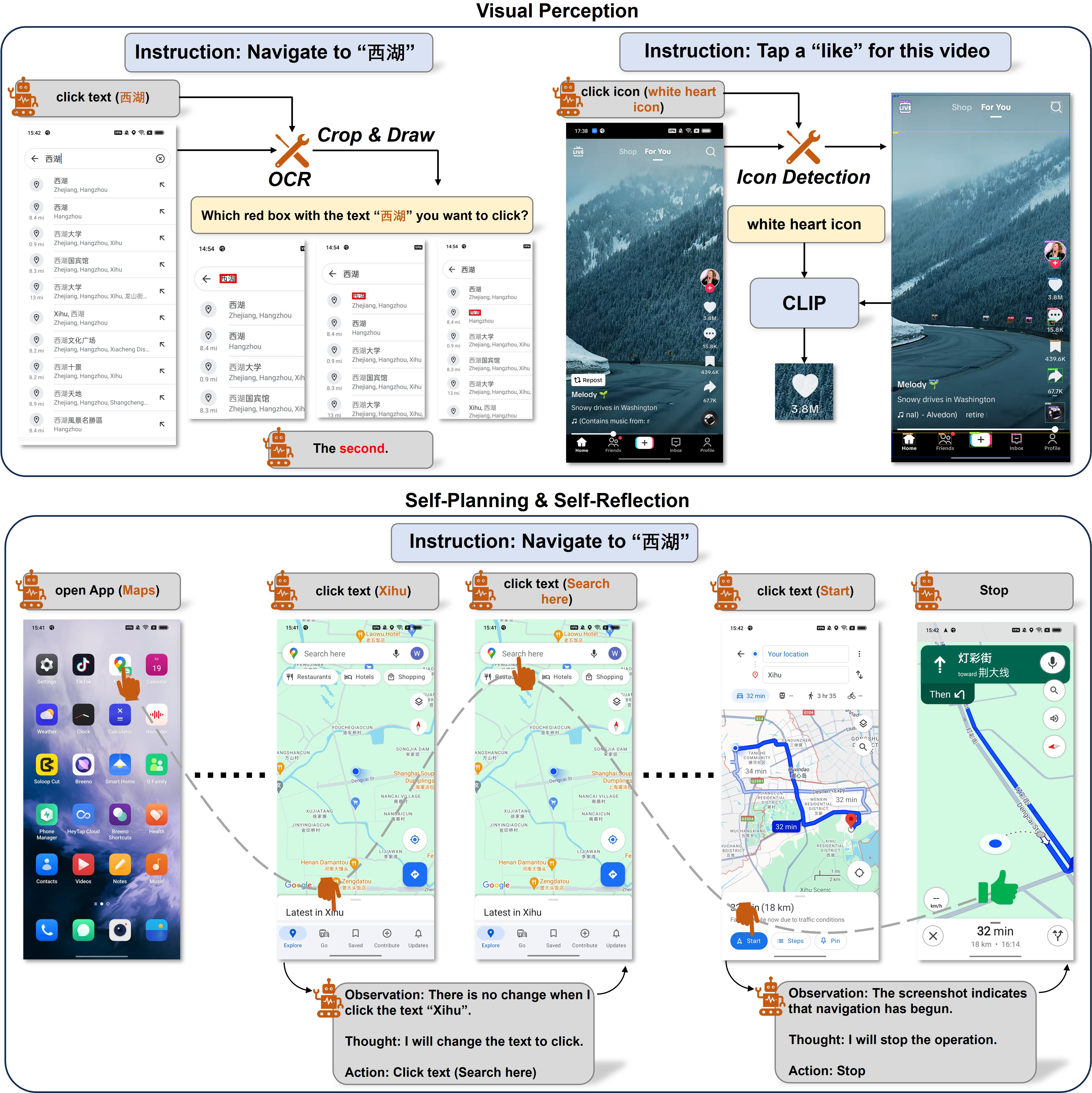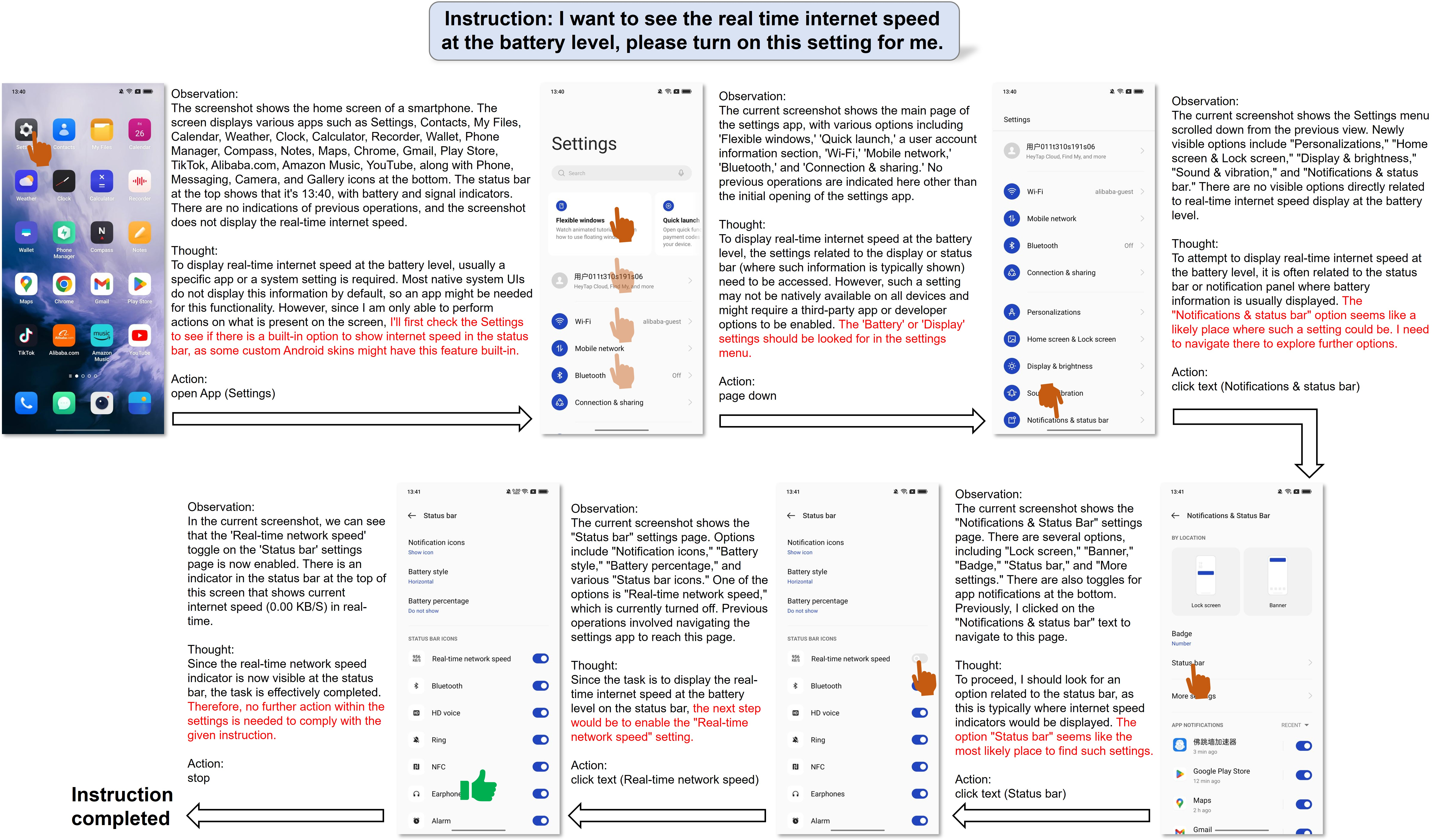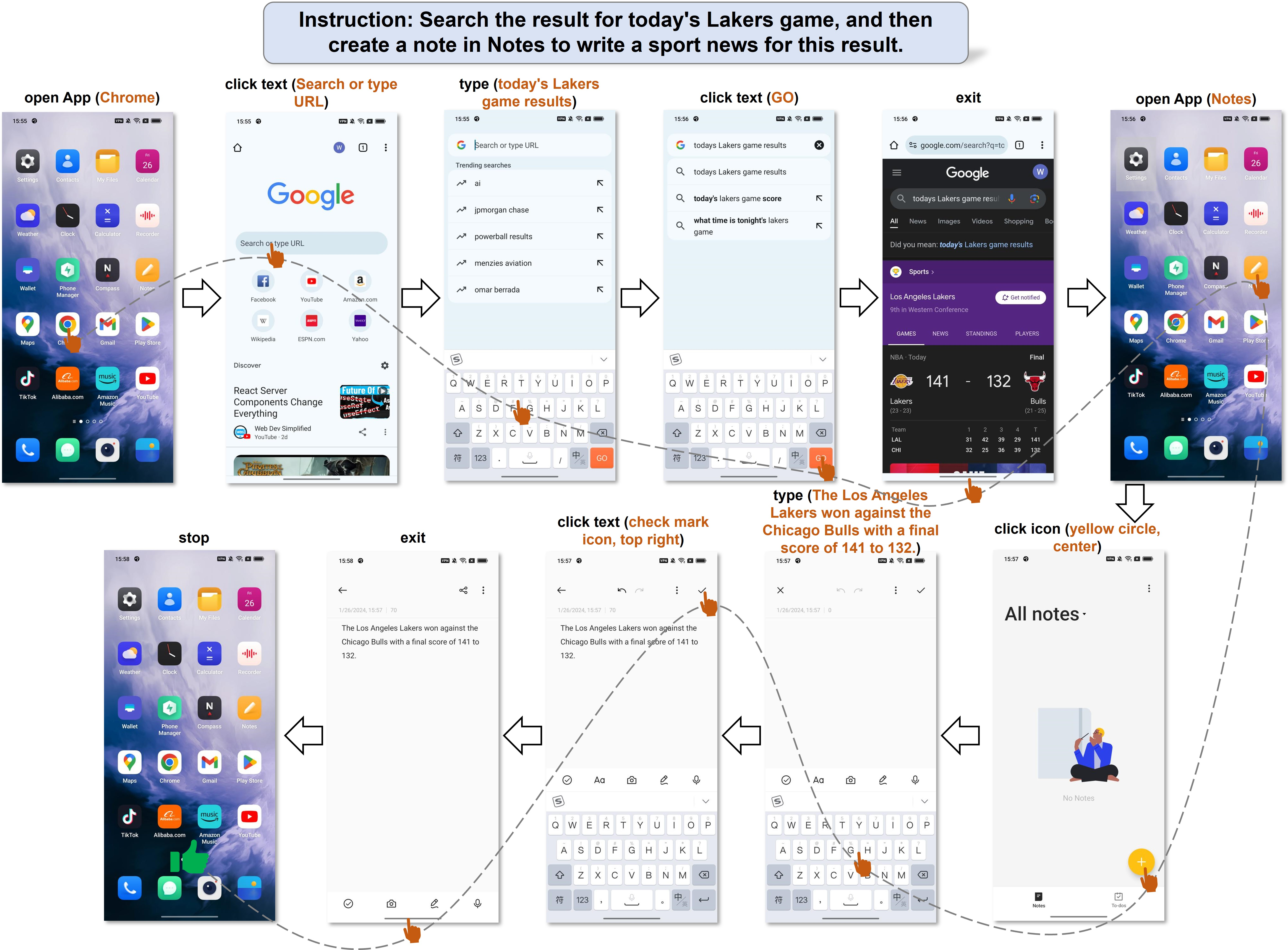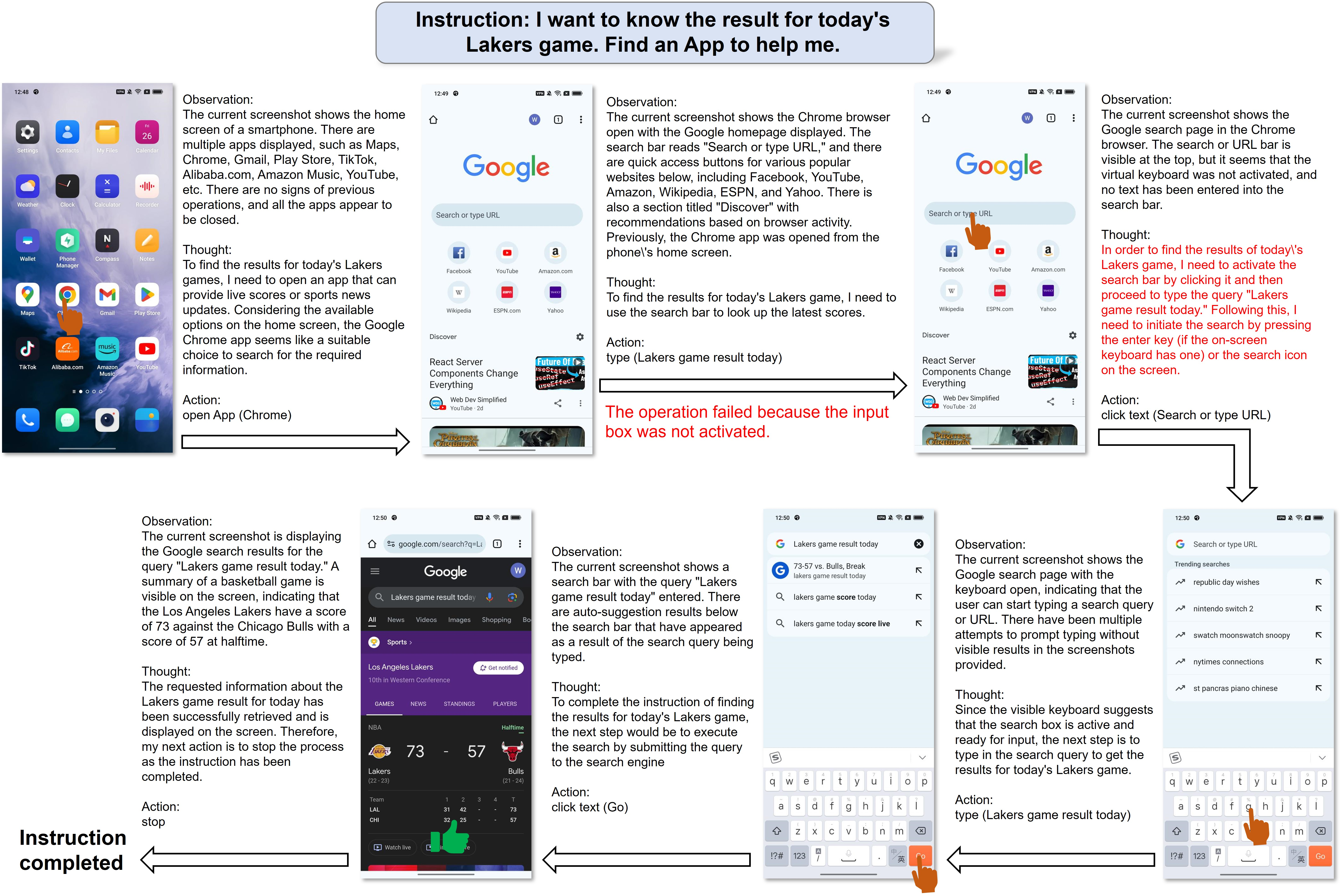Mobile-Agent: Autonomous Multi-Modal Mobile Device Agent with Visual Perception (2401.16158v2)
Abstract: Mobile device agent based on Multimodal LLMs (MLLM) is becoming a popular application. In this paper, we introduce Mobile-Agent, an autonomous multi-modal mobile device agent. Mobile-Agent first leverages visual perception tools to accurately identify and locate both the visual and textual elements within the app's front-end interface. Based on the perceived vision context, it then autonomously plans and decomposes the complex operation task, and navigates the mobile Apps through operations step by step. Different from previous solutions that rely on XML files of Apps or mobile system metadata, Mobile-Agent allows for greater adaptability across diverse mobile operating environments in a vision-centric way, thereby eliminating the necessity for system-specific customizations. To assess the performance of Mobile-Agent, we introduced Mobile-Eval, a benchmark for evaluating mobile device operations. Based on Mobile-Eval, we conducted a comprehensive evaluation of Mobile-Agent. The experimental results indicate that Mobile-Agent achieved remarkable accuracy and completion rates. Even with challenging instructions, such as multi-app operations, Mobile-Agent can still complete the requirements. Code and model will be open-sourced at https://github.com/X-PLUG/MobileAgent.
- Modelscope-agent: Building your customizable agent system with open-source large language models. arXiv preprint arXiv:2309.00986, 2023.
- Controlllm: Augment language models with tools by searching on graphs. arXiv preprint arXiv:2310.17796, 2023a.
- Interngpt: Solving vision-centric tasks by interacting with chatgpt beyond language. arXiv preprint arXiv:2305.05662, 3, 2023b.
- Llava-plus: Learning to use tools for creating multimodal agents. arXiv preprint arXiv:2311.05437, 2023c.
- Hugginggpt: Solving ai tasks with chatgpt and its friends in huggingface. arXiv preprint arXiv:2303.17580, 2023.
- Visual chatgpt: Talking, drawing and editing with visual foundation models. arXiv preprint arXiv:2303.04671, 2023.
- Gpt4tools: Teaching large language model to use tools via self-instruction. arXiv preprint arXiv:2305.18752, 2023a.
- Small llms are weak tool learners: A multi-llm agent. arXiv preprint arXiv:2401.07324, 2024.
- Mm-react: Prompting chatgpt for multimodal reasoning and action. arXiv preprint arXiv:2303.11381, 2023b.
- Metagpt: Meta programming for multi-agent collaborative framework. arXiv preprint arXiv:2308.00352, 2023.
- Auto-gpt for online decision making: Benchmarks and additional opinions. arXiv preprint arXiv:2306.02224, 2023c.
- Visual instruction tuning. arXiv preprint arXiv:2304.08485, 2023d.
- Minigpt-4: Enhancing vision-language understanding with advanced large language models. arXiv preprint arXiv:2304.10592, 2023.
- mplug-owl: Modularization empowers large language models with multimodality. arXiv preprint arXiv:2304.14178, 2023a.
- Instructblip: Towards general-purpose vision-language models with instruction tuning. arXiv preprint arXiv:2305.06500, 2023.
- Improved baselines with visual instruction tuning. arXiv preprint arXiv:2310.03744, 2023e.
- Minigpt-v2: Large language model as a unified interface for vision-language multi-task learning. arXiv preprint arXiv:2310.09478, 2023.
- mplug-owl2: Revolutionizing multi-modal large language model with modality collaboration. arXiv preprint arXiv:2311.04257, 2023b.
- Qwen-vl: A frontier large vision-language model with versatile abilities. arXiv preprint arXiv:2308.12966, 2023.
- Vila: On pre-training for visual language models. arXiv preprint arXiv:2312.07533, 2023.
- Gpt-4v (ision) is a generalist web agent, if grounded. arXiv preprint arXiv:2401.01614, 2024.
- Appagent: Multimodal agents as smartphone users. arXiv preprint arXiv:2312.13771, 2023d.
- Learning transferable visual models from natural language supervision. In International conference on machine learning, pages 8748–8763. PMLR, 2021.
- Grounding dino: Marrying dino with grounded pre-training for open-set object detection. arXiv preprint arXiv:2303.05499, 2023f.
Sponsor
Paper Prompts
Sign up for free to create and run prompts on this paper using GPT-5.
Top Community Prompts
Collections
Sign up for free to add this paper to one or more collections.






